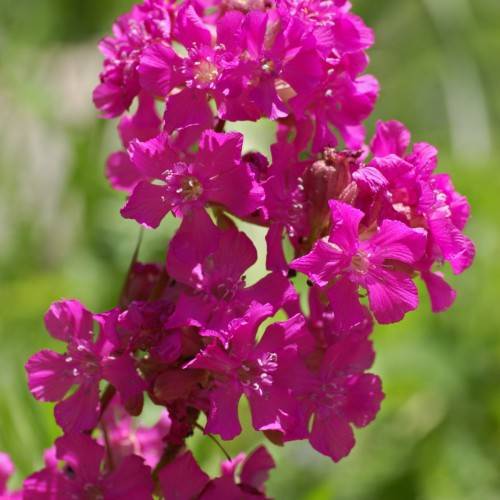
catchfly
Lychnis viscaria 'Splendens Plena'
Cycle:
Herbaceous Perennial
Watering:
Minimum
Hardiness Zone:
3 - 8
Flowers:
Flowers
Sun:
Full sun
Leaf:
Yes
Growth Rate:
High
Maintenance:
Low
Drought Tolerant:
Yes
Care Level:
Medium
watering
Catchfly needs to be watered when the soil begins to feel dry. Depending on its location, light, and temperature this could be anywhere from every 2 to 7 days. It's important to avoid over-watering catchfly, as this can cause root rot. If planted in moist but well-draining soil, it should need about 1-2 inches of water each time it is watered. If planted in loam, it likely will only need around ¾ inch of water each week.
sunlight
Catchfly (Lychnis viscaria 'Splendens Plena') grows best in full sun. A minimum of 6 hours of direct sunlight each day is recommended for optimal blooming and growth throughout the spring and summer months. In cooler climates with fewer hours of sunlight each day, as little as 4 hours of direct sunlight can still result in adequate flowering in late summer. In areas with very hot summers, partial shade is recommended to prevent the soil from drying out and the plant from wilting. For the best results, place the catchfly in a spot that receives morning sun and afternoon shade.
pruning
Catchfly (Lychnis viscaria 'Splendens Plena') is an attractive perennial that is well suited for cottage gardens and rockeries. Pruning this species is typically done twice a year - in the spring and in early summer - to encourage bushiness and to remove any faded flowers or dead wood. The best time for pruning catchfly is early spring when the foliage starts to come out, as this allows for the removal of any winter damage or unwanted stems prior to the new growth season. In terms of how much to prune, aim to remove roughly 1-third of the total height of the plant to encourage branching and bushiness. Be sure to only prune off shoots that have already flowered, as pruning unopened buds may prevent the flowering of new buds.
